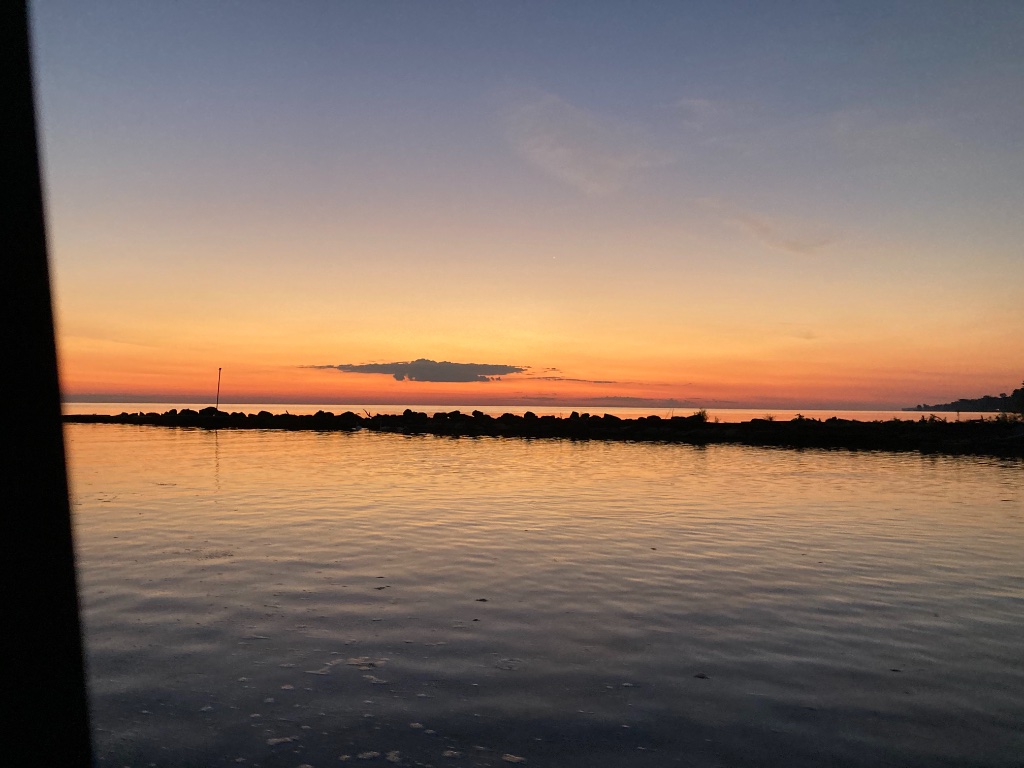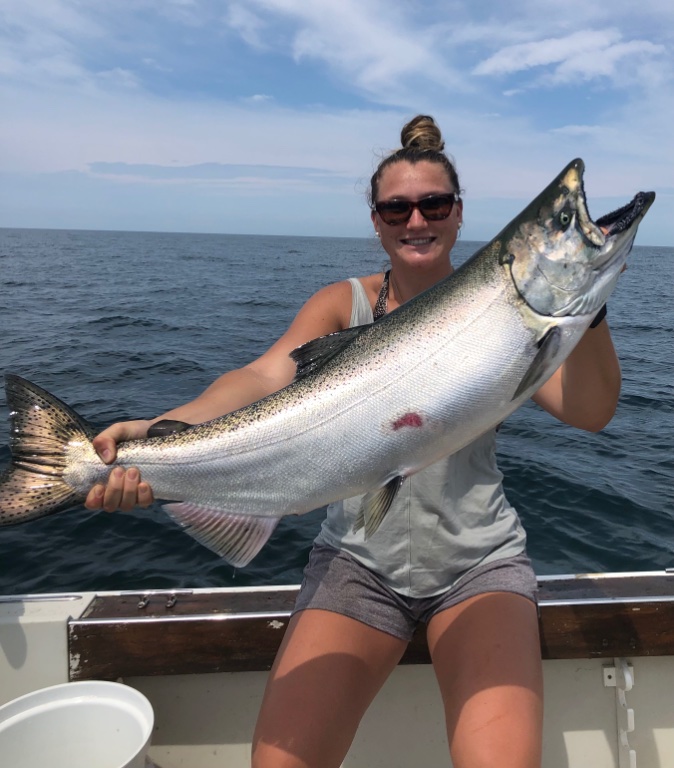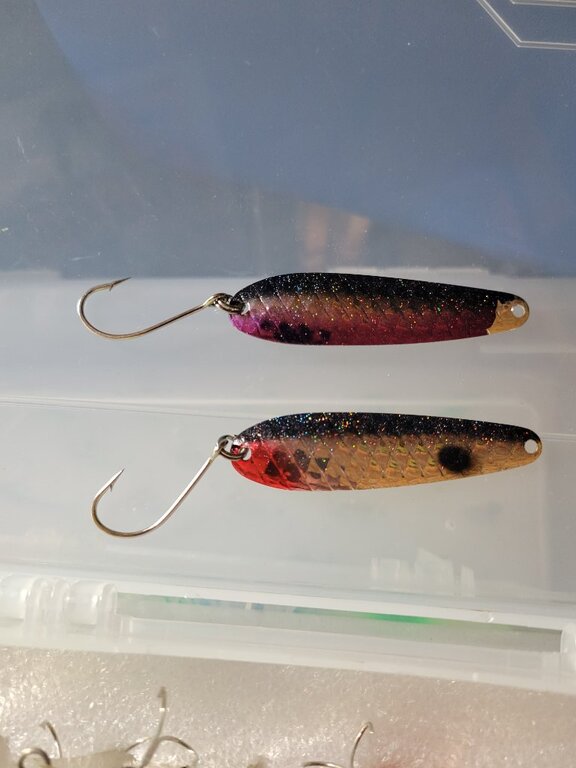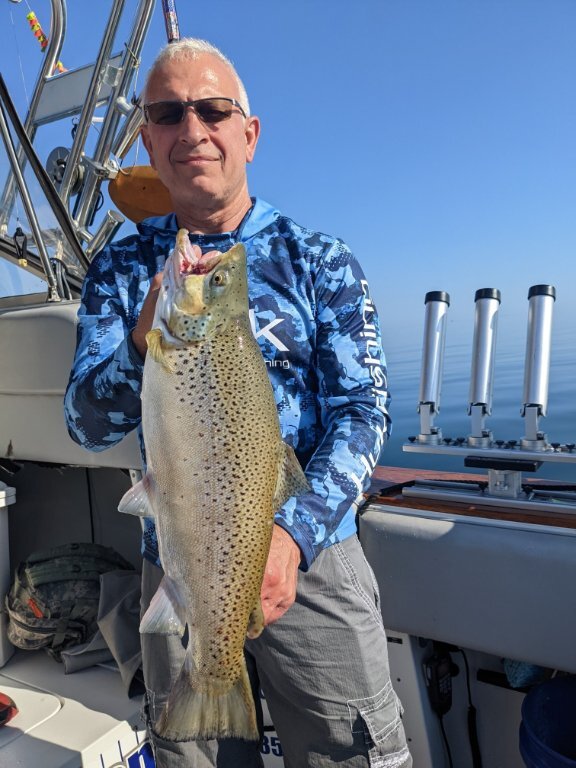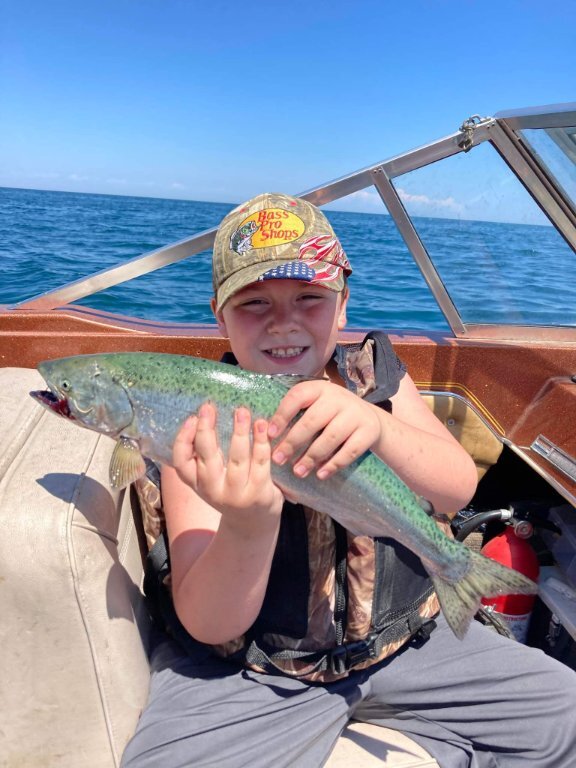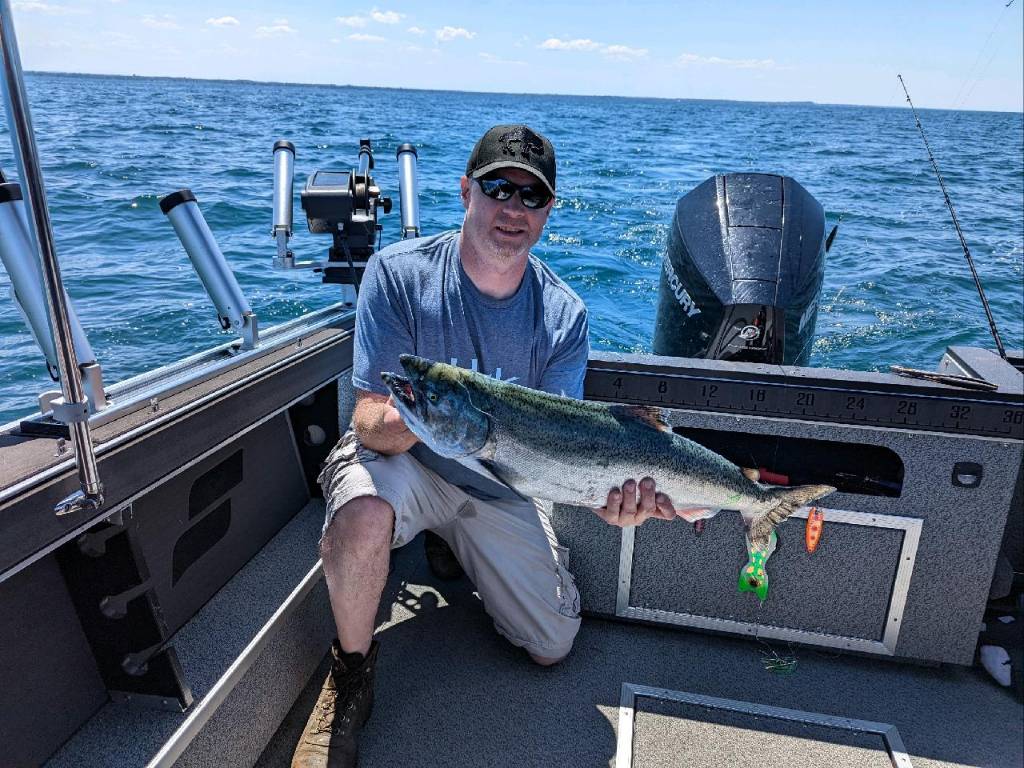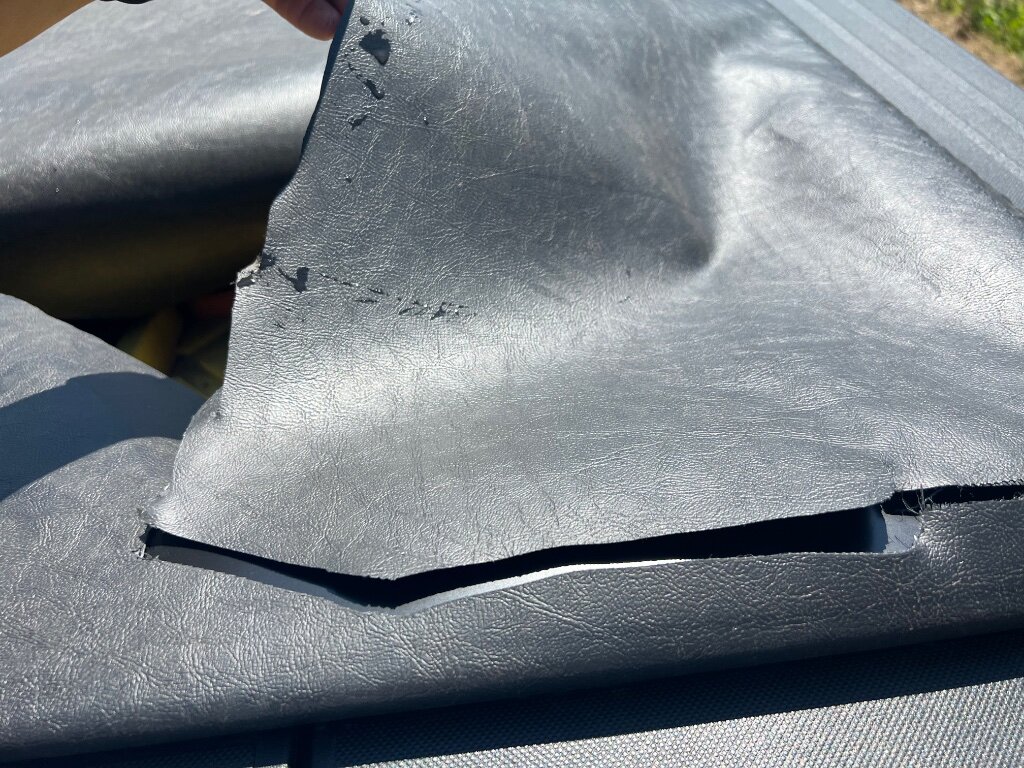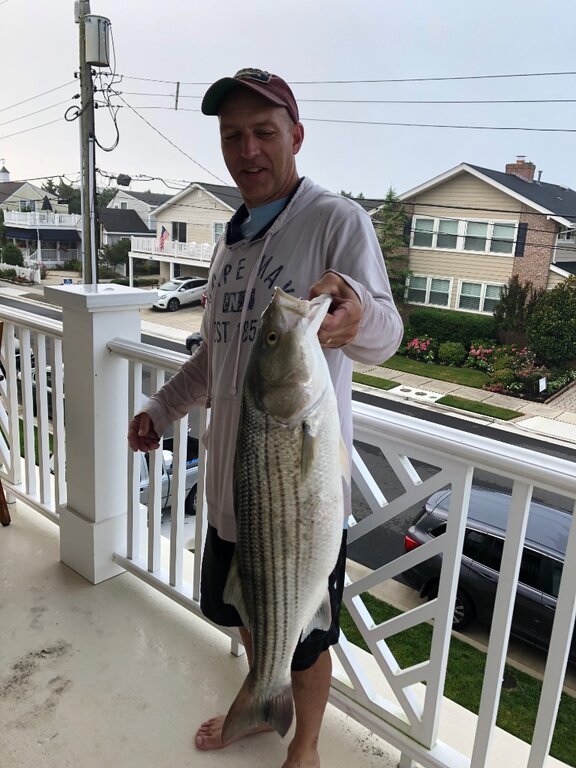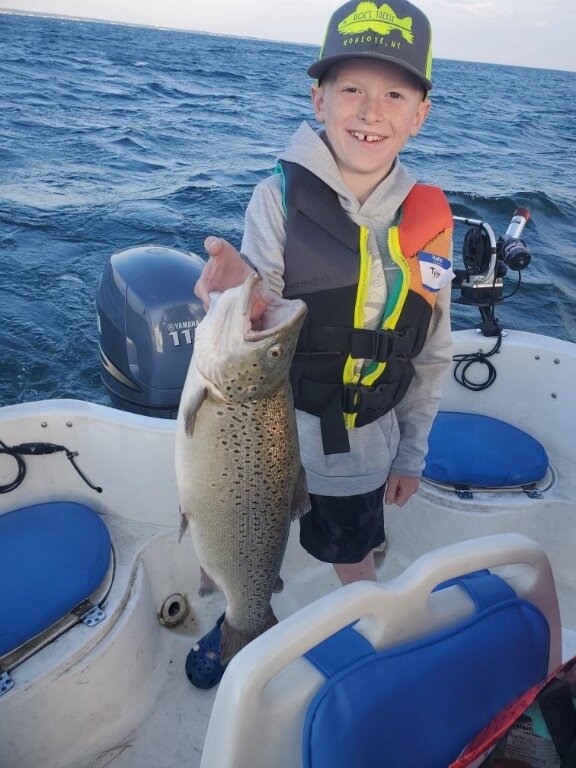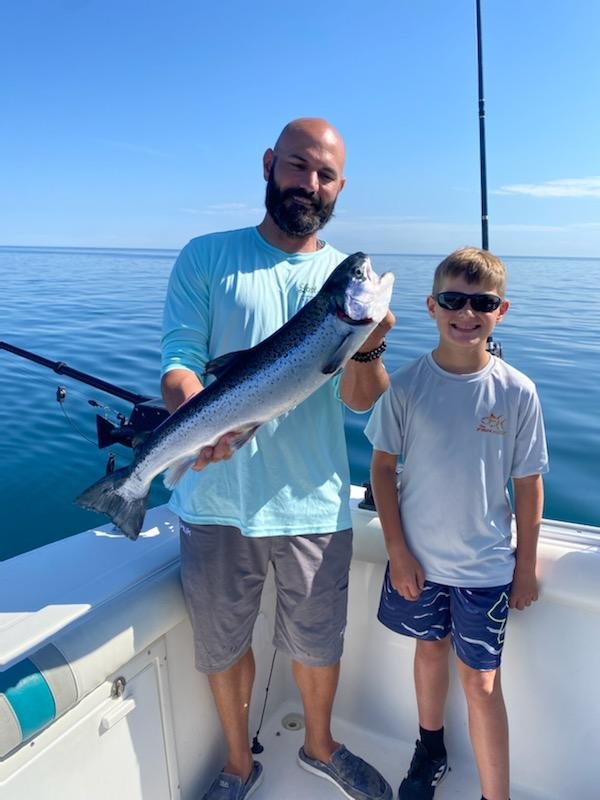

LongLine
Professional-
Posts
3,873 -
Joined
-
Last visited
Content Type
Profiles
Forums
Events
Gallery
Store
Everything posted by LongLine
-
-

Sandy 8/20/22
LongLine replied to GAMBLER's topic in New York Fishing Reports - Lake Ontario (South Shore)
-

best strategy when Lake O flips for salmon
LongLine replied to Steve.e's topic in Open Lake Discussion
Under a no-wind condition, there are two main paths or general flows of water in Lake Ontario. (i.e., a two-gyre system). These are attributed to the Coriolis effect which shifts flow to the right in the northern hemisphere. The 1st gyre is along the south shore which flows from Wilson towards Oswego. The second is along the north shore which flows from Toronto towards Prince Edward Island. The currents are stronger along the shorelines than offshore. This simply because the nearshore water is warmer than the offshore depths, hence it less dense and easier to move for the expended energy. The south shore current is deflected northward at Oswego towards the St Lawrence. However, there is too much water for it to exit the St. Lawrence so a bunch of it is deflected back to the west, out in the middle of the lake. The north shore current is deflected southward at Prince Edward Island. It meets up with the south shore current which is already on its way to the west. They join up and continue westward, near the middle of the lake. Together they will eventually meet head-on with incoming water that has been directed eastward by the Coriolis effect. (Around the Scotch Bonnet Ridge) The westward flow is basically split with some of it being directed southward and where it meets up with the south shore current. The rest is directed northward and meets up with the north shore current. Hence there are two circular currents in Lake Ontario: South flows counterclockwise and north flows clockwise. The south shore current is predominantly faster than the North shore current simply because the south shore is shallower out farther from shore and generally warmer than the north shore. The above is all with no wind. If flow was governed by Coriolis effect, there would be no changes in water movement on Lake Ontario. Water waves on the Lake are caused by wind. Frictional forces between the wind and the water cause the waves and water to move. If the water didn't move then you wouldn't see breaking whitecaps on the lake, nor water breaking completely over the Charlotte pier or the break wall at Oswego. You'd never see the water gauge at Cape Vincent rise 2 feet while the one at Olcott go down by 2 ft at the same time. (And vice versa) Even though the prevailing winds in our area are out of the west, the surface winds are what cause our water waves. The prevailing winds are driven by Coriolis effect. They can be thought of as a bicycle wheel laying on its side at considerable elevation. The surface winds can be quite different than the prevailing winds. The surface winds can be thought of as a bicycle wheel standing upright. Surface winds are caused by temperature differentials which lead to pressure differentials. i.e warm air rises, cold air sinks. When the surface of the water is warmer than the land then there will be an offshore wind. When the land is warmer than the surface water there will be an onshore wind. We've all gone out early on a summer morning and experienced a nice offshore wind then around 10:00 the wind shifts. This is because the land warmed up as the sun rose higher in the sky. i.e the temperature differential changed. Surface winds can be much more localized than the prevailing winds. We've all experienced a good south wind at Sandy Creek, yet a north wind is reported at Sodus at the same time. When the localized south wind is uniform from a relatively large swath of land, say from Wilson to Oswego, it will push a lot of surface waves and water to the Canadian side, via friction. The water column will actually rise along the Canadian shore. This additional water pushes downward. (gravity) The water at the bottom of the water column has to go somewhere as water is not compressible and it is constrained by the lake bottom, hence it "squirts" towards the south. The water at the top of the Canadian water column can't go back south as it is being pushed northward by the wind's frictional forces. Water to the east & west of it is also being pushed northward. As the bottom water "squirts, it pushes water from the middle/bottom of the lake towards the south shore. This is basic hydraulics and hence what we call (somewhat misleadingly) "flipping." Are surface winds affected by Coriolis effect? Depends on the direction of the wind. Out of the south then yes. If out of the west then no. Additionally, the You-tube talks about 30 degrees of longitude difference starting at the equator and 136 MPH surface speed difference. Lake Ontario, at 43.1, is less than one longitude degree wide so deflection is a lot less than the video discusses. -

Braddocks 8/19
LongLine replied to whaler1's topic in New York Fishing Reports - Lake Ontario (South Shore)
went from almost Long Pond to just past the Genny this morning basically from 90-115. Had 54F down 95. No fleas - no fish. (couple light releases but no one home) -

best strategy when Lake O flips for salmon
LongLine replied to Steve.e's topic in Open Lake Discussion
Lake Ontario is a double gyre body of water. (This is what, over the centuries formed the Scotch Bonnet Ridge.) From the Oak to Sodus, the current is generally towards the east. While Coriolis effect has effect on water movement, as does shoreline & bottom topography, the wind is the major driver on Lake Ontario. (Generally, the water current comes towards shore at Braddocks./Sandy) Lake O currents are much stronger in the winter than in summer, per the GLERL website. They have sometimes also shown big changes in direction. Speed can change in just a couple days. If you look at this site, you'll see currently big differences in position of the thermocline at Oswego vs the Oak and wind direction. https://upstatefreshwater.org/NRT-Data/Lake-Ontario-Data/lake-ontario-data.html If water movement was due to Coriolis effect then temps would be much more uniform. Which they are not. On the 17th, 42F water was almost on shore at Olcott whereas Rochester had 64F. This morning off Rochester, I had 54F on the bottom at 95 FOW and 70F on the bottom in 50 FOW. I'm curious what other guys had. Here's how water got pushed today. (B,C & E) wih a SW wind. -

Braddocks 8/3
LongLine replied to whaler1's topic in New York Fishing Reports - Lake Ontario (South Shore)
-
On the highway.......DOWN!
-
Brightly colored ones. Oranges, Pinks, etc.
-
-

I-Bay 7/19 Quick Trip
LongLine replied to BreakingBass's topic in New York Fishing Reports - Lake Ontario (South Shore)
Hopefully! -
They're more calm water an/or racing boats. Air can get under them and between the hulls, hence blow them around.
-

Sandy 7/16
LongLine replied to WISHIN4FISH's topic in New York Fishing Reports - Lake Ontario (South Shore)
-

Sandy 7/16 Mid day trip
LongLine replied to ShawnJ's topic in New York Fishing Reports - Lake Ontario (South Shore)
-

Sandy 7/15
LongLine replied to Double-D's topic in New York Fishing Reports - Lake Ontario (South Shore)
-
Launched by 6, out the river & to the left. Slight chop out of SSW on top of little rollers (about 1 ft) from the west. Bright day, near full moon fairly high in the sky. Put in at 125 & went out to 325FOW. Clean screen till 270 then saw a few bait pods. Crossed a thermal/scum line running SW-NE at about 280. 2 steelheads down 45 & 55. A little over legal. Melon spook & Dolphin. Small King with 85 ft of cable out on a normal spook. 1st stlhd quite the jumper! Revived them all. Some fleas, but manageable. Nap time - Luck to all.
-

DEC Atlantic salmon stocking proposal MUST READ
LongLine replied to fjrider's topic in Open Lake Discussion
-

Sliders vs stackers for salmon
LongLine replied to Happyjack's topic in Questions About Trout & Salmon Trolling?
-

DEC Atlantic salmon stocking proposal MUST READ
LongLine replied to fjrider's topic in Open Lake Discussion
Read through your report...quite interesting. Water Authority temps much better than mid-lake buoy, however it's been my experience that temp at same depth a few miles away can be quite different. Wish there were a lot more thermometers out there. Did some looking today & found this: Surface temp from beginning of this year warmer than 30 yr average. Also somewhat same for last year. Did some more looking - at Historical % Ice coverage. www.glerl.noaa.gov/data/ice/#historical Your report states 2012, 2016, 2020 were good years and 2014, 2017 & 2018 poor years. I noticed that for the good years % ice coverage was relatively low and ice gone by early-mid March, whereas poor years had much greater %'s and ice lasted into end of 1st week in April. El Nino/La Nina. ??? I think La Nina usually gives us warmer weather. I know NOAA has said this is 2nd La Nina year in a row & are predicting it'll last into 2023. -

Happy kid
LongLine replied to Morningdew's topic in New York Fishing Reports - Lake Ontario (South Shore)
-

I-Bay 7/14 Trifecta
LongLine replied to BreakingBass's topic in New York Fishing Reports - Lake Ontario (South Shore)
-

DEC Atlantic salmon stocking proposal MUST READ
LongLine replied to fjrider's topic in Open Lake Discussion
-

DEC Atlantic salmon stocking proposal MUST READ
LongLine replied to fjrider's topic in Open Lake Discussion
-

DEC Atlantic salmon stocking proposal MUST READ
LongLine replied to fjrider's topic in Open Lake Discussion



